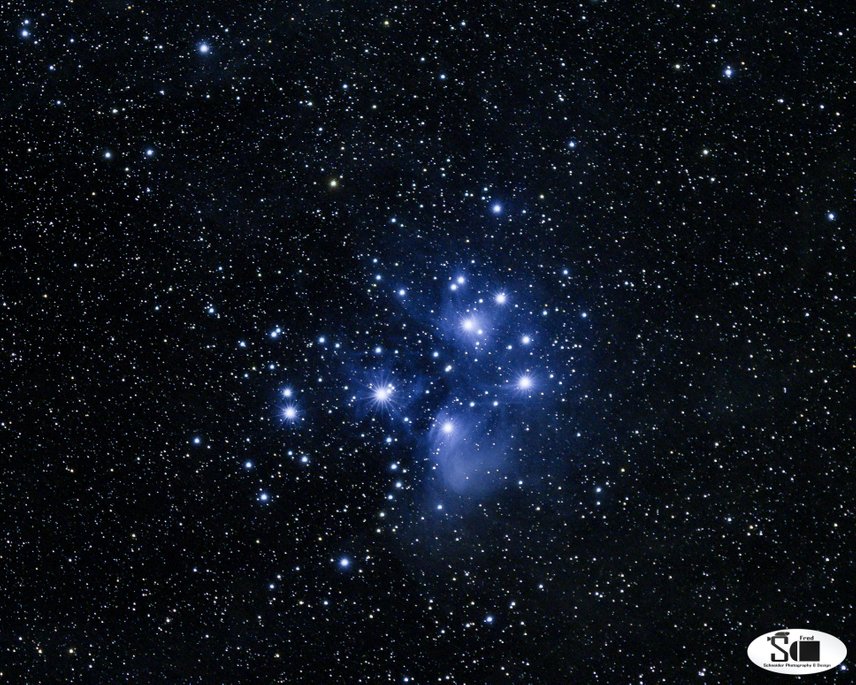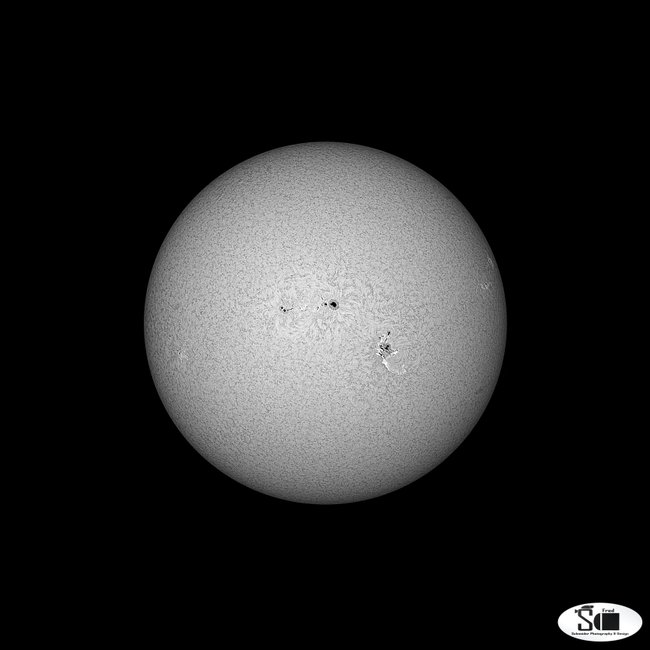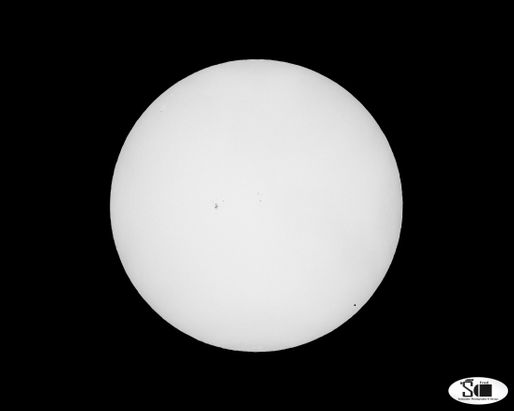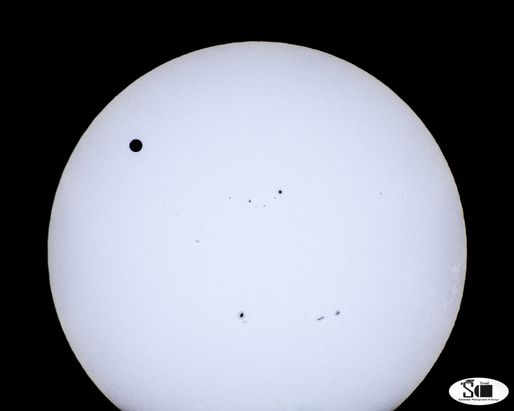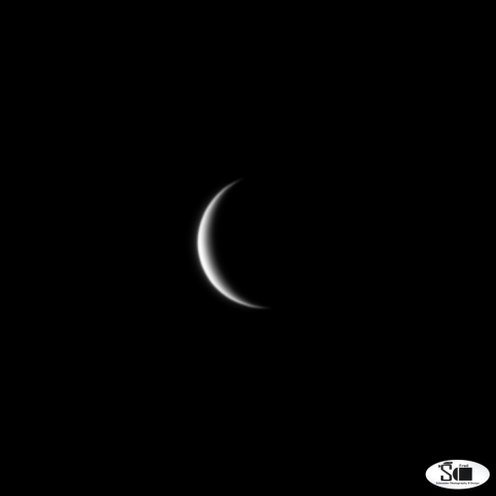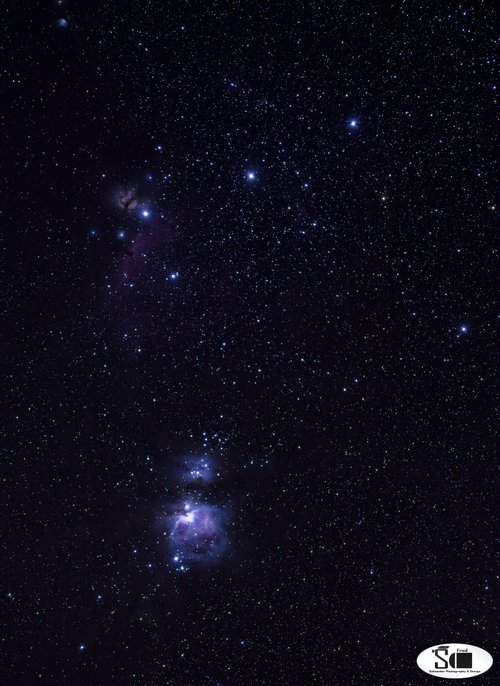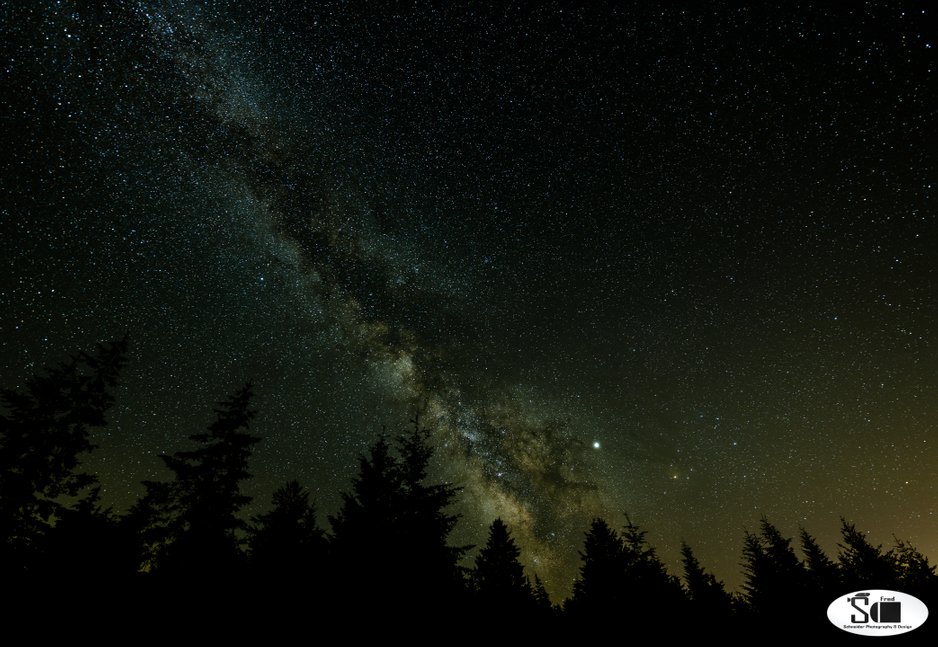Schneider Photography & Design
Astrophotos
Total Solar Eclipse August 21, 2017
The Pleiades
Solar Flare
Image taken through a hydrogen-alpha solar telescope showing the Sun's layer called the chromosphere. The flare is the white ribbon coursing through the sunspot group below and right of center.
The Moon
Planetary Transits of the Sun
When Mercury and Venus pass directly between the Sun and the Earth as they move in their orbits, we see them as black dots on the face of the Sun; Mercury very small and Venus much larger. These are called transits. These images were taken through telescopes fitted with white light (visible spectrum) solar filters, which show the layer of the Sun called the photosphere. The black dots other than the planets are sunspots. A Mercury transit occurs about every 7 years. Venus transits occur 4 times in 234 years in an asymmetric pattern.
Venus Crescent Phase
Venus and Mercury show phases like the Moon does. As they orbit around the Sun, varying amounts of their surfaces visible to us are illuminated by sunlight. When Venus, for example, is positioned closest to Earth in its orbit, but not directly between Earth and Sun as in a transit, it is called inferior conjunction. Just like the New Moon, none of Venus' surface can be seen during inferior conjunction. This image of Venus was taken three weeks after inferior conjunction when 13% of its visible surface was illuminated. It was taken in broad daylight with an astro video camera and telescope using an IR-pass filter.
Orion's Belt and Sword
Night Sky Landscapes
Milky Way and Jupiter
The planet Jupiter is the bright "star" near the lower right end of the Milky Way.
All photos copyright Fred V Schneider










